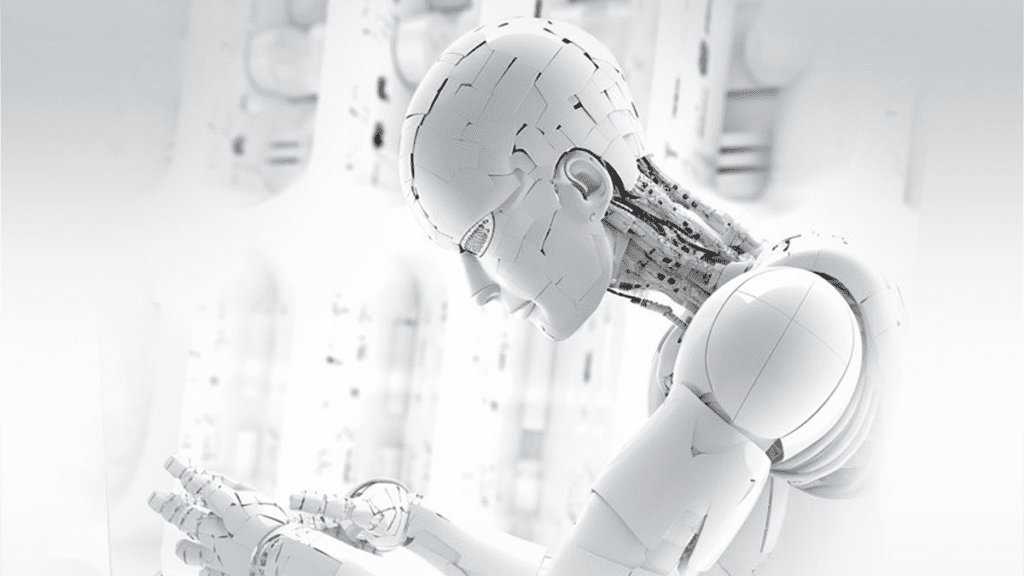Introduction to Innovation
Innovation is a core driver of progress and competitiveness, underpinning economic growth and societal advancement. Fundamentally, it’s a process that involves implementing new ideas, improving existing ones, or creating dynamic products or services that meet new requirements or unarticulated needs. Innovation is a key differentiator that sets companies, regions, and nations apart, creating a significant competitive advantage.
However, innovation isn’t just about the creation of new products or services. It encompasses multiple dimensions, from technology and business models to governance and culture. It can happen anywhere, at any time, in any field or discipline. This versatility gives innovation its transformative power, its ability to disrupt status quo and create new paradigms of thought, behavior, and operation.


Types of Innovation
Innovation is categorized into different types based on various factors, such as the degree of novelty, source of innovation, and its impact on the market or society.
Incremental Innovation
Incremental innovation refers to the continuous improvement of existing products, processes, or services. This type of innovation usually involves making minor changes or improvements to existing products or processes, resulting in improved performance or efficiency.
For instance, the evolution of the smartphone exemplifies incremental innovation. From their inception to their current state, smartphones have undergone numerous incremental changes in design, functionality, and technology, enhancing user experience and performance over time.
Disruptive Innovation
Coined by Clayton M. Christensen, disruptive innovation describes a process where a smaller company successfully challenges established incumbent businesses by targeting overlooked customer segments with cheaper and simpler alternatives. Over time, these innovations gain broader market acceptance, disrupting the existing market.
An iconic example of disruptive innovation is Netflix. It transformed the traditional brick-and-mortar video rental business into a digital, subscription-based streaming service, eventually causing a market shift and leading to the decline of giants like Blockbuster.
Radical Innovation
Radical innovation is characterized by the development of new products, processes, or services that significantly alter the way businesses or industries operate. It often involves pioneering technology and carries high degrees of risk and uncertainty.
The invention of the internet is an example of radical innovation. Its creation revolutionized communication and business, ushering in an entirely new era of information sharing and commerce.
Architectural Innovation
Architectural innovation refers to transforming the way existing components or systems are linked together while preserving the core design concepts. This type of innovation can lead to significant improvements in performance or functionality.
The shift from internal combustion engine vehicles to electric vehicles (EVs) demonstrates architectural innovation. While the basic concept of a vehicle remains, the underlying technology and energy source have dramatically changed, leading to environmentally friendly transportation.
Influential Figures in Innovation
Innovation is often driven by visionary individuals whose ideas and efforts reshape industries and societies. Let’s review a few historically influential figures in the realm of innovation, organized chronologically:


Thomas Edison (1847-1931): Known as “The Wizard of Menlo Park,” Edison held 1,093 patents and is famous for developing many devices in fields such as electric power generation, mass communication, sound recording, and motion pictures.


Henry Ford (1863-1947): As the founder of the Ford Motor Company, Ford revolutionized transportation and American industry by creating the assembly line mode of production, which has greatly influenced modern industrialization.


Steve Jobs (1955-2011): Co-founder of Apple Inc., Jobs’ vision and innovation led to products like the Macintosh, iPod, iPhone, and iPad. These devices redefined communication and personal computing, transforming our interaction with technology.


Elon Musk (1971-present): Muskhas spearheaded several high-impact ventures such as SpaceX, Tesla, and Neuralink, pushing boundaries in space exploration, electric vehicles, and neuroscience. His work continuously challenges established norms and catalyzes disruptive change.
Technological Innovation: A Game Changer
Technological innovation is at the forefront of societal advancement, significantly influencing the way we live, work, and interact. These innovations are often the result of scientific and technological research and can take the form of new products, processes, or services.
Take artificial intelligence (AI) as an example. AI and its subfield, machine learning, are contributing to vast improvements across various industries. From self-driving cars and voice-activated assistants to predictive analytics in healthcare and personalized recommendations in e-commerce, AI is redefining possibilities.
Another notable example is the advent of blockchain technology. Initially known for enabling the existence of cryptocurrencies like Bitcoin, blockchain has far broader applications. Its potential for providing secure, transparent transactions could revolutionize industries like finance, supply chain management, and healthcare.
Looking Ahead: Future Innovation Trends
Innovation is a perpetual engine, and staying ahead requires understanding the upcoming trends that will shape the future. As we move forward, we anticipate several key areas that are poised to be major innovation fronts:
Sustainable Innovation
With growing awareness and concern over climate change and environmental sustainability, green and sustainable innovation is expected to be a major focus. Innovations in renewable energy, waste management, sustainable agriculture, and green technologies will be paramount in addressing global environmental challenges.
Digital Health Innovation
The COVID-19 pandemic has highlighted the importance of digital health. Moving forward, innovation in telemedicine, remote patient monitoring, AI-assisted diagnostics, and digital therapeutics is expected to advance significantly, creating a more resilient, patient-centered healthcare system.
Space Tech Innovation
With private companies like SpaceX and Blue Origin making strides in space exploration, we are likely to see accelerated innovation in space technology. This might include advancements in rocket technology, space tourism, and even potential colonization efforts.
AI and Machine Learning
As AI and machine learning technologies continue to evolve, we can expect to see increased innovation in this area. This could include advances in natural language processing, computer vision, autonomous systems, and personalized AI.
This is just the beginning of our comprehensive exploration of innovation. Stay tuned for Part 2, where we’ll delve deeper into the mechanisms that drive innovation, the importance of fostering an innovative culture, and strategies for maintaining a competitive edge in an ever-evolving world.


Driving Forces of Innovation
Innovation isn’t a random occurrence. It’s typically a result of carefully coordinated efforts to improve or create novel solutions. Several key factors drive innovation:
Market Demand
Consumer needs and desires are one of the principal drivers of innovation. As customer expectations evolve, companies must innovate to meet these new demands, stay relevant, and maintain a competitive edge. Examples include the transition to electric vehicles in response to growing environmental consciousness or the development of healthier food alternatives due to increasing health awareness.
Technological Advancements
Technological progress often fuels innovation. As new technologies become available, they enable fresh possibilities, helping to solve existing problems or even create entirely new products or services. The advent of the internet, for instance, spurred a vast array of innovations, from e-commerce and digital marketing to cloud computing and remote work.
Competitive Pressure
In highly competitive markets, innovation is a key differentiator. To maintain their market position and ensure growth, companies must innovate consistently. This can be seen in the smartphone market, where brands like Apple, Samsung, and Huawei continuously innovate to stay ahead.
Government Policies and Regulations
Government policies can significantly impact the pace and direction of innovation. Policies that promote research and development, provide tax incentives, or set regulatory standards can stimulate innovation. An example would be the renewable energy sector, where government subsidies and regulations have accelerated innovation in solar and wind energy technologies.


Fostering an Innovative Culture
An innovative culture is a critical factor in ensuring consistent innovation. This involves cultivating an environment that encourages creativity, embraces risks, values learning, and promotes collaboration. Below are some strategies to foster an innovative culture:
Encourage Experimentation
Innovation often involves taking risks and experimenting with new ideas. Organizations should foster a culture that encourages employees to try new approaches and learn from failures, as this can lead to breakthrough innovations.
Promote Collaboration
Innovation is often sparked by diverse perspectives coming together. Encourage collaboration within your organization and even with external partners to stimulate new ideas and innovative solutions.
Invest in Continuous Learning
With rapid advancements in technology and changing market dynamics, continuous learning is crucial. Offering learning opportunities and resources can help employees stay up-to-date and spark innovative ideas.
Reward Innovation
Recognizing and rewarding innovative efforts can motivate employees to think creatively and contribute to innovation. This could involve implementing an innovation award or acknowledging innovative ideas in team meetings.
Maintaining a Competitive Edge through Innovation
Innovation is key to maintaining a competitive advantage. To ensure a sustained edge, businesses need to:
Stay Customer-Centric
Understanding customer needs and expectations can inform innovation efforts and ensure they deliver value. Regularly engage with customers, gather feedback, and use these insights to drive your innovation strategy.
Invest in Research and Development
R&D is often the bedrock of innovation. Allocate sufficient resources to R&D activities and stay abreast of technological advancements and industry trends.
Embrace Digital Transformation
Digital technologies offer enormous potential for innovation. Embrace digital transformation, leveraging technologies like AI, big data, cloud computing, and IoT to innovate your products, services, and business processes.
Foster Agility and Adaptability
In an ever-evolving landscape, the ability to quickly adapt is crucial. Foster an agile mindset that embraces change and can rapidly respond to new opportunities or challenges.
In Part 3 of our series on innovation, we’ll delve deeper into the process of innovation, including ideation, prototyping, and scaling, while also exploring how to measure innovation success.


The Process of Innovation
Innovation doesn’t usually happen in a vacuum; it’s often a systematic process involving several stages. While the specifics can vary between industries or organizations, the process typically includes the following phases:
Ideation
Ideation is the initial stage where new ideas are generated. This process often involves brainstorming sessions, innovation workshops, or other creative activities. It’s essential to foster an open environment that encourages diverse perspectives, as this can lead to more creative and innovative ideas.
Evaluation and Selection
Once a pool of ideas has been generated, the next step is to evaluate these ideas and select the most promising ones for further development. This process might involve considering the potential impact, feasibility, alignment with business objectives, and market relevance of each idea.
Prototyping and Testing
The selected ideas are then developed into prototypes or pilot projects. These early versions are used for testing and validation purposes. Testing helps identify potential issues or improvements, providing valuable feedback before the full-scale implementation.
Implementation
After refining the prototypes based on feedback, the innovation is implemented. This could involve launching a new product, rolling out a new process, or introducing a new business model.
Review and Improvement
After implementation, the innovation should be reviewed regularly to ensure it’s delivering the intended results and to identify areas for further improvement.


Measuring Innovation Success
Assessing the success of innovation initiatives is crucial for determining their impact and effectiveness. However, measuring innovation can be challenging due to its complex and often intangible nature. Here are a few approaches that can be used:
Innovation Input Metrics
These measure the resources invested in innovation activities, such as the amount of funding allocated to R&D, the number of employees involved in innovation initiatives, or the time dedicated to ideation and creative activities.
Output Metrics
Output metrics measure the tangible results of innovation activities. This might include the number of new products or services launched, the number of patents filed, or the revenue generated from new innovations.
Performance Metrics
Performance metrics assess the impact of innovation on overall business performance. This might involve tracking changes in market share, growth in revenue or profitability, or improvements in operational efficiency.
Customer-Centric Metrics
These metrics gauge the impact of innovation on customers. They might include measures like customer satisfaction scores, net promoter scores, or changes in customer behavior or usage patterns.
Navigating Challenges in Innovation
While innovation can offer significant benefits, it also comes with various challenges. Understanding these challenges and finding effective ways to navigate them is crucial for successful innovation. In Part 4 of this series, we’ll delve deeper into these challenges and explore strategies for overcoming them, along with case studies of successful innovation. We’ll also discuss the role of leadership in driving innovation and the importance of aligning innovation with overall business strategy.
Challenges in Innovation
Innovation, while transformative and impactful, is not without its challenges. Here, we explore some common hurdles companies may face on their innovation journey.
Resistance to Change
Innovation often implies change, which can spark resistance within an organization. This resistance can stem from fear of the unknown, comfort with the status quo, or concerns about job security.
Limited Resources
Innovation often requires substantial investment of time, money, and human resources. Organizations, especially smaller ones, may find it challenging to allocate sufficient resources for innovation activities.
Lack of Clear Strategy
Innovation initiatives may fail if they lack a clear strategy or alignment with business objectives. Without a clear direction, innovation efforts may not produce the desired impact.
High Risk and Uncertainty
Innovation involves a degree of risk and uncertainty. Not every innovation initiative will be successful, and some may result in losses.


Overcoming Innovation Challenges
Despite these challenges, there are strategies that can help organizations foster a robust culture of innovation.
Foster a Culture of Openness and Learning
To counter resistance to change, foster a culture that embraces learning, encourages openness to new ideas, and views failures as opportunities for learning and growth.
Leverage Collaborations and Partnerships
To mitigate resource constraints, consider collaborations or partnerships with other organizations. This can help pool resources, share risks, and stimulate new ideas.
Establish a Clear Innovation Strategy
To ensure your innovation efforts are focused and impactful, establish a clear innovation strategy that aligns with your business objectives. This should outline your innovation goals, areas of focus, and key performance indicators.
Accept and Mitigate Risk
Embrace the inherent risk in innovation. Develop strategies to mitigate these risks, such as prototyping, phased rollouts, and comprehensive market research.
The Role of Leadership in Innovation
Leadership plays a pivotal role in driving innovation. Leaders need to champion innovation, provide strategic direction, and create a conducive environment for innovation. They should inspire and empower their teams, fostering creativity, risk-taking, and collaboration.
Aligning Innovation with Business Strategy
Innovation should be integral to your business strategy. This alignment ensures that your innovation efforts support your overall business goals, providing a clear direction and focus for your innovation initiatives.
In Part 5, the final installment of our series, we’ll present case studies of successful innovation and discuss emerging concepts and perspectives in innovation. We’ll also take a closer look at the role of innovation in sustainable development and how businesses can embrace innovation for a more sustainable future.
Case Studies of Successful Innovation
To better understand the process, benefits, and impact of innovation, let’s explore a few successful case studies:


Apple
Apple’s innovation journey is a powerful testament to the transformative potential of disruptive innovation. Apple completely revolutionized the music industry with the iPod and iTunes, followed by the smartphone industry with the iPhone, and later the tablet industry with the iPad. Their success stems from a relentless focus on customer experience, cutting-edge design, and technological excellence.


Amazon
Amazon has consistently pushed the boundaries of innovation, starting as an online bookstore before evolving into the world’s largest online marketplace. Amazon has since ventured into cloud services with AWS, introduced AI-powered devices like Alexa, and explored ambitious projects like drone delivery. Amazon’s culture of customer obsession, long-term thinking, and willingness to experiment are key drivers of its innovation success.


Tesla
Tesla has disrupted the automotive industry with its electric vehicles. By focusing on sustainability, superior performance, and innovative features like autopilot, Tesla has reshaped perceptions around electric vehicles and spurred the entire auto industry to follow suit.
Emerging Perspectives in Innovation
As we navigate the complexities of the 21st century, our understanding of innovation continues to evolve. Some emerging perspectives include:
Open Innovation
Open innovation emphasizes collaboration with external partners, including customers, research institutions, or even competitors. This approach leverages external knowledge and ideas to spur innovation, as exemplified by companies like Procter & Gamble with their Connect + Develop program.
Frugal Innovation
Frugal innovation focuses on creating cost-effective, simple, and high-quality solutions, often for low-income or underserved markets. This approach has gained traction in developing regions and is increasingly being recognized for its potential to drive sustainable and inclusive growth.
Innovation for Sustainable Development
As we grapple with pressing global challenges, from climate change to inequality, innovation is pivotal for sustainable development. By focusing on sustainable innovation, businesses can not only reduce their environmental footprint and address societal issues, but also tap into new growth opportunities and gain a competitive edge.
For example, innovations in renewable energy, circular economy models, sustainable agriculture, and green technologies are critical for addressing environmental challenges. Similarly, social innovations can help address societal issues, from health and education to poverty and inequality.
Embracing innovation is no longer optional; it’s imperative for businesses to thrive in today’s fast-paced, ever-evolving landscape. By fostering a culture of innovation, embracing new perspectives, and aligning innovation with sustainable development, businesses can drive growth, competitiveness, and positive impact. Innovation, indeed, holds the key to shaping a better, more sustainable future for all.
As we’ve reached the conclusion of the series with Part 5, we’ve explored the comprehensive aspects of innovation from its definition, types, and notable innovators to future trends, process, and challenges. We delved into case studies of successful innovation and emerging perspectives that are redefining the innovation landscape.
But remember, the journey of innovation is never-ending. It’s a persistent pursuit that requires continuous learning, experimenting, and adapting. Even though this series has come to an end, the exploration of innovation continues.


Let’s recap some of the key takeaways:
Understanding Innovation: Innovation involves introducing something new or significantly improved. This could be a product, process, or business method. It’s a primary driver of competitiveness and economic growth.
Types of Innovation: There are several types of innovation, including incremental, disruptive, radical, and architectural. Technological innovations, particularly digital technologies, are becoming increasingly important.
Notable Innovators: Innovators like Thomas Edison, Steve Jobs, and Elon Musk have made significant contributions to global progress, transforming industries and society at large.
Future Trends in Innovation: Trends like sustainable innovation, digital health innovation, space tech, and AI and machine learning are likely to shape the future of innovation.
Process of Innovation: The innovation process involves several stages, from ideation and selection to prototyping, implementation, and review.
Challenges in Innovation: Common challenges include resistance to change, resource limitations, lack of clear strategy, and the inherent risks and uncertainty in innovation.
Fostering Innovation Culture: An open, learning-oriented culture that encourages experimentation, collaboration, and risk-taking can foster innovation.
Role of Leadership: Leaders play a pivotal role in promoting and nurturing innovation, providing strategic direction, and creating an enabling environment.
Innovation for Sustainability: Innovations that contribute to sustainable development can help address global challenges while also providing competitive advantages.
Continuous Learning: The innovation journey involves continuous learning and adaptation. Stay abreast of new trends, learn from successes and failures, and persistently strive for improvement.
Finally, in an ever-evolving world, innovation is the key to resilience and growth. Whether you’re an individual, a startup, or a multinational corporation, nurturing a mindset of innovation can help you navigate change, seize opportunities, and shape a better future. Continue to question, explore, and innovate – the possibilities are endless!



